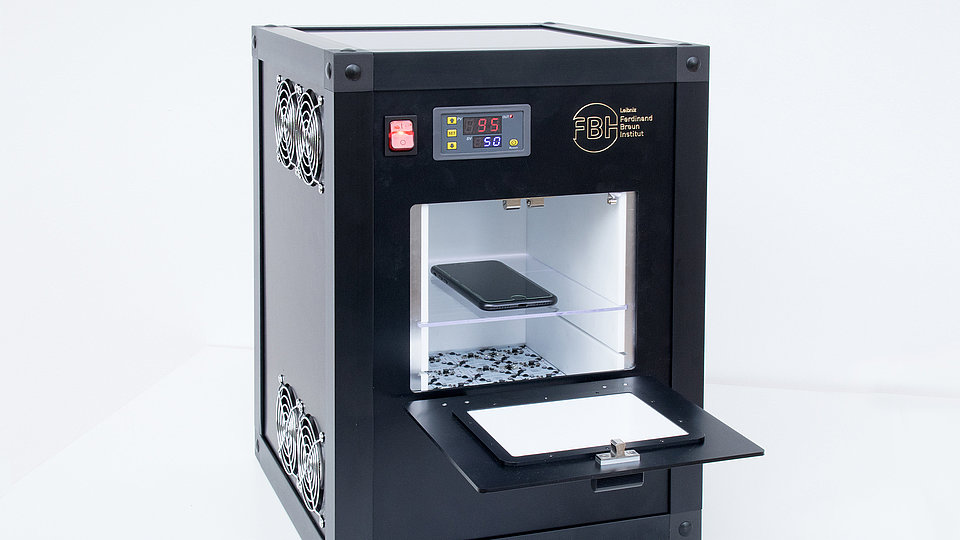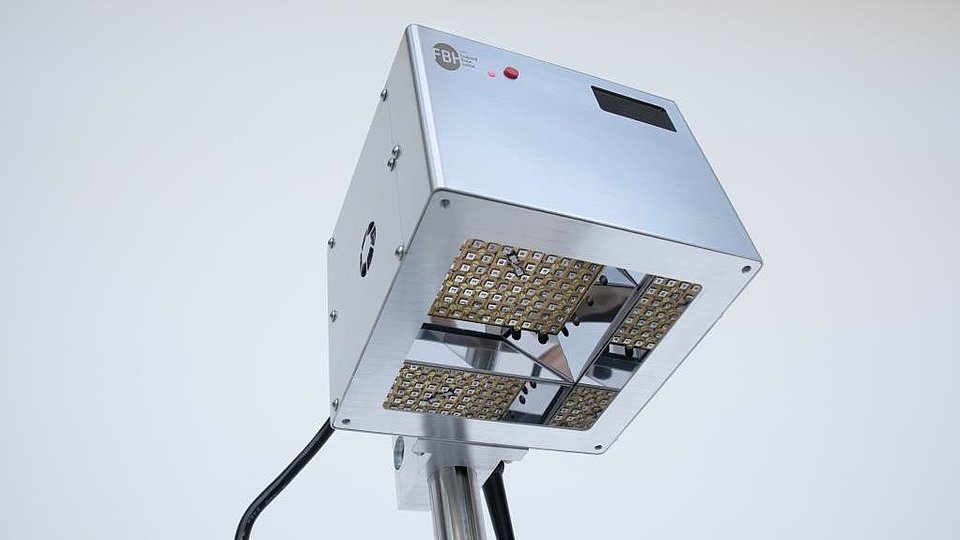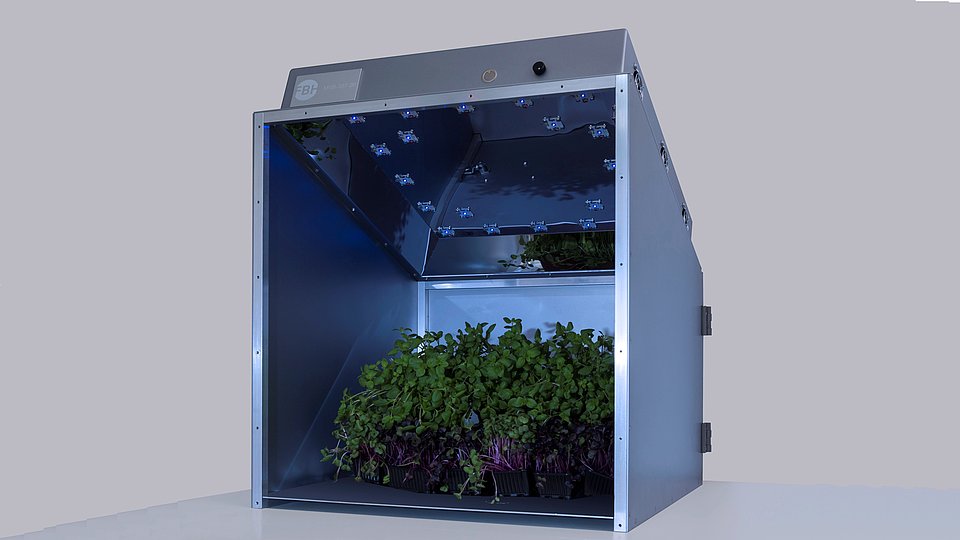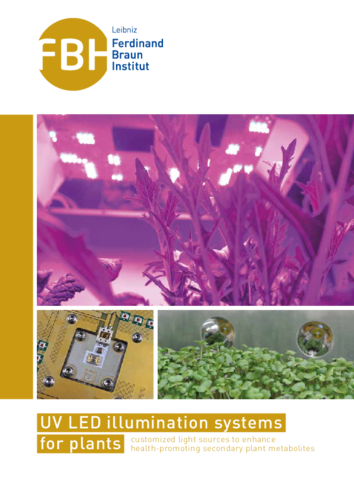LED Irradiation Systems
Irradiation systems with UV LEDs have many advantages over those with UV discharge lamps. More details can be found on our UV LED irradiation systems page. In our Prototype Engineering Lab we develop, partly together with our project partners, LED-based irradiation systems, which we optimize for different applications. We use both our own UV LEDs and LEDs from commercial suppliers. Their properties (e.g. emission wavelength or design) are precisely matched to the application. Here we present some of the realized irradiation systems including application fields:
UVC LED demonstrator for surface disinfection
This prototype with 265 nm LEDs was developed especially for the disinfection of everyday objects. In this FBH demonstrator, 128 LEDs with optical powers of 25 mW each were installed. The object to be disinfected lies on a UV-transparent glass and can thus be irradiated from both sides. With an irradiance >1 mW/cm², the minimum UV dose of 500 mJ/cm² recommended by the Center for Disease Control and Prevention (US Department of Health) is achieved in less than ten minutes.
UVC LED system – fighting microorganisms on the skin
UVC light emitting around 230 nm is supposed to kill germs on human skin without damaging it permanently. To be able to prove this thesis in practical tests, this irradiation system was developed for scientific testing. 120 of such UVC LEDs with a maximum output power of 0.2 mW/cm2 were arranged on an area of only 8 x 8 cm².
UVB irradiation for plant growth lighting
UVB LEDs offer a narrow emission spectrum, and their peak-wavelength can be tailored to ideally match the effective spectrum. This UVB module can, for example, be used to optimize the biosynthesis of specific natural plant substances. It can additionally be supplemented with red and blue LEDs - their irradiation intensity can be adjusted indepently from each other.



